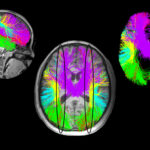COVID-19 complications in children: What’s behind the recent alerts?

You may have heard the alerts in the news: a new inflammatory syndrome in a small number of children that appears to be related to COVID-19 and affects multiple organs in the body. Doctors around the world have reported features of toxic shock syndrome and Kawasaki disease, in which blood vessels, including the coronary arteries, enlarge or form aneurysms. Some children have also developed gastrointestinal symptoms, excessive blood clotting, kidney injury, or inflammation in the heart.
The Centers for Disease Control and Prevention is now calling this emerging syndrome “multi-system inflammatory syndrome in children (MIS-C).” On May 2, the International PICU-COVID-19 Collaboration convened a Zoom conference to compare notes. Coordinated by Dr. Jeffrey Burns, chief of Critical Care Medicine at Boston Children’s Hospital, the Collaboration brought together experts from a variety of fields in pediatrics — cardiology, rheumatology, infectious disease, intensive care, and Kawasaki disease.
Should I worry about MIS-C?
The panelists reviewed several dozen cases in Europe and the U.S. (primarily on the East Coast, but also the Midwest and South). They concluded that MIS-C is rare in children, and that most children who have developed it to date have done well.
Read about the latest findings on MIS-C, recently reported in The New England Journal of Medicine.
“The vast majority of children exposed to the coronavirus have no illness or very mild illness,” says cardiologist Dr. Jane Newburger, who was on the May 2 panel and directs the Kawasaki program at Boston Children’s. “But if your child develops a persistent fever, appears ill, is not feeling well, or isn’t eating or drinking, you shouldn’t delay in getting medical attention.”
How do I know if my child has MIS-C?
Because symptoms vary from child to child, the main thing to watch for is fever and your child appearing fatigued and ill. Children whose illness includes Kawasaki-like disease may have a rash, bloodshot eyes, swollen hands and feet, cracked lips, or a swollen or bumpy tongue that looks like the seeds on a strawberry. Those whose illness involves the GI tract may have diarrhea, abdominal pain, or a swollen abdomen. Of note, children may not always have alarming respiratory symptoms.
The vast majority of children exposed to the coronavirus have no illness or very mild illness. But if your child develops a persistent fever, appears ill, is not feeling well, or isn’t eating or drinking, you shouldn’t delay in getting medical attention.
There have been many media reports about “COVID toes” — odd discolorations, swelling, and rashes in the toes and feet, often without any other symptoms. These are not part of the multi-system inflammatory syndrome in children, says Dr. Mary Beth Son, a rheumatologist at Boston Children’s who was also on the May 2 panel. If you see them in your child, it’s not a cause for undue alarm.
“This appears to be benign and completely separate from the other symptoms we’ve been seeing,” Dr. Son says.
Interestingly, the panelists noted that not all children reported have tested positive for COVID-19. The reason for this is not yet clear. But the timing of their illness suggests that it is related to the infection.

How should my child be cared for?
Some of the children in the panel’s review needed to be admitted to the hospital, and some required intensive care. Treatments included anticoagulation to curb blood clotting, and IV immunoglobulin, corticosteroids, and drugs blocking IL-1 or IL-6 to curb inflammation. Some children have only needed supportive care, without medications.
Panelists agreed that children who appear to have MIS-C need close observation. Pediatric specialists in infectious disease, rheumatology, critical care, and cardiology should be involved their care, to anticipate and address different aspects of the illness.
The panelists recommended specific laboratory tests to help define the illness. They also advise that children have echocardiograms to look at the heart and coronary arteries. Children with serious cardiac complications will need to be followed longer-term.
Why do only some children with COVID-19 develop MIS-C?
That is still a mystery. Studies are starting up to look at genetic and immune factors that may put children at risk. One possibility is that the immune response to the coronavirus somehow activates inflammation in children who are genetically susceptible.
“It is even possible that the antibodies that children are making to the virus are creating an immune reaction in the body,” says Dr. Newburger.
Boston Children’s is involved in two studies that may help answer these questions. Dr. Adrienne Randolph, a critical care pediatrician at Boston Children’s, is leading a nationwide study tracking children with COVID-19 to determine why only a handful become very sick. As part of another national study, a team led by Dr. Ofer Levy, an infectious disease specialist, is studying how the immune systems of people hospitalized with COVID-19 respond to the disease over time.
Coronavirus has been circulating for weeks. Why is this syndrome showing up now?
That remains a mystery as well. Some affected children who were negative on nasal swab testing for the virus had positive antibody tests. This may mean that inflammatory complications arise later in the disease, when the virus can no longer be found in the nose.
The panelists called for more research to better understand MIS-C — how children’s immune systems are responding, what genetic risk factors they carry, and why there’s so much variation in symptoms. They also called for investment in clinical trials and registries of children with COVID-19 and children with the new inflammatory syndrome.
“The best evidence to date tells us that children rarely become critically ill from COVID-19, or from this new syndrome,” says Dr. Burns. “We want to enroll patients in registries and clinical trials to promote evidence-based care and a better understanding of this disorder.”
Learn more about Boston Children’s response to COVID-19.
Related Posts :
-

Parsing the promise of inosine for neurogenic bladder
Spinal cord damage — whether from traumatic injury or conditions such as spina bifida — can have a profound impact on bladder ...
-

Knowing what life is worth: I am an adult heart patient and much more
Most of the children showed off a favorite toy. Some brought items that were meaningful to their family or culture. ...
-

Unveiling the hidden impact of moyamoya disease: Brain injury without symptoms
Moyamoya disease — a rare, progressive condition that narrows the brain’s blood vessels — leads to an increased risk of stroke ...
-

Unique data revealed just when Mickey’s heart doctors could operate
When Mikolaj “Mickey” Karski’s family traveled from Poland to Boston to get him heart care, they weren’t thinking ...





